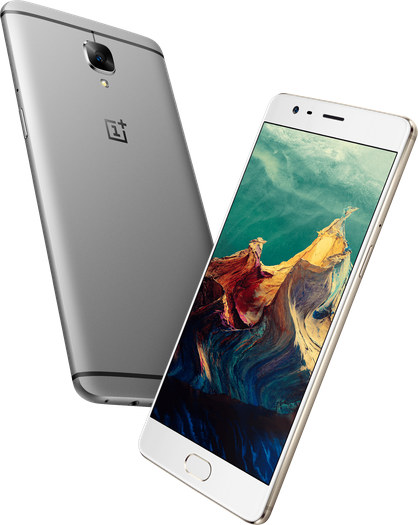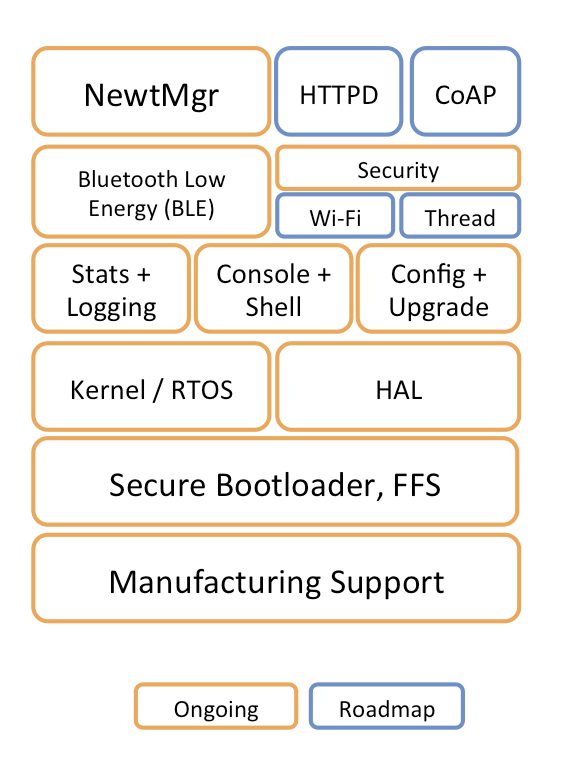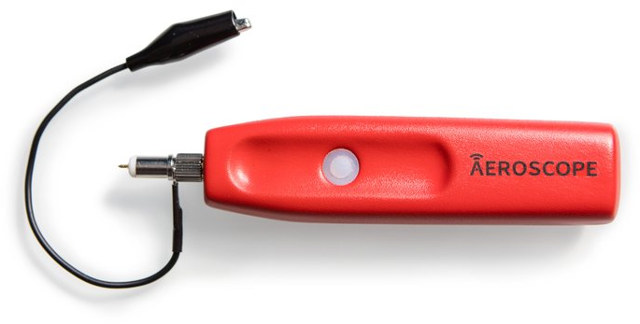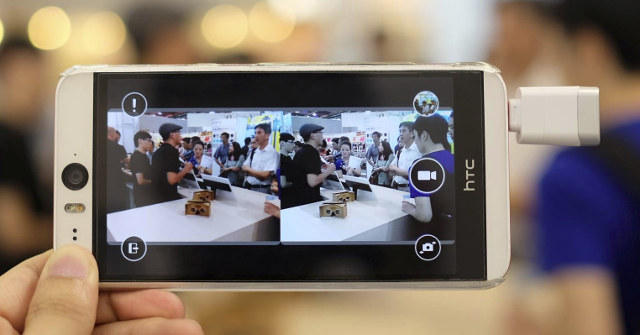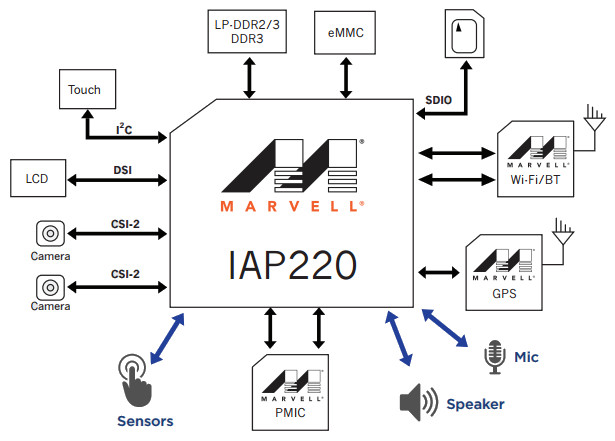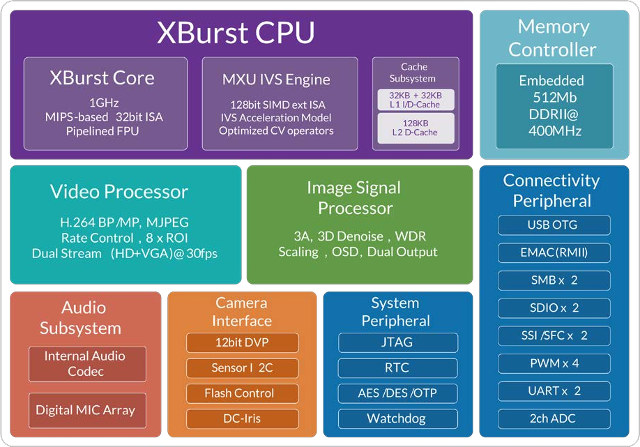Most smartphone manufacturers will drag their feet to release GPL source code, unless you go with Google Nexus or Android One smartphones. OnePlus is another exception as they have just launched OnePlus 3 smartphone, and released the source code the very same day as the hardware launch. OnePlus 3 specifications: SoC – Qualcomm Snapdragon 820 quad core ARMv8 processor with two “Gold” cores up to 2.2 GHz, two “Silver” cores up to 1.6 GHz, Adreno 530 GPU with support for OpenGL ES 3.2, OpenCL 2.0, and Vulkan, and Hexagon 680 DSP @ up to 825 MHz System Memory – 6GB LPDDR4 Storage – 64GB UFS 2.0 flash Display – 5.5″ 1920 x 1080 optic AMOLED touchscreen display; Corning Gorilla Glass 4 Audio – 3.5mm audio jack; bottom facing speaker; dual microphone with noise cancellation; Dirac HD sound technology Cellular Networks GSM: 850, 900, 1800, 1900 MHz North America model: WCDMA: Bands […]
H.265, H.264 and VP9 4K Video Playback with Hisilicon Hi3798C V200 TV Box (Video)
VP9 is starting to become a first class citizen as more and more ARM SoC, such as Amlogic S905X and Hisilicon Hi3798C V200, are getting 4K VP9 hardware video decoding support. I’ve already tested 4K VP9 in Amlogic S905X based NEXBOX A5, and today I’ll report my results with Sunhed S3 TV box based on the new Hisilicon processor. I won’t do a full review yet, as just like NEXBOX A5, it’s still an engineering sample, and the firmware is not quite ready for public release. For example, Google Play is working, but I could not install YouTube, and Kodi 16.0 (likely a custom version) would not start, even after clearing the cache and data. Anyway, I tested 4K VP9, as well as 4K H.265 and H.264 since the last two codec are also here to stay. I first tried to play over SAMBA through the Gigabit Ethernet connection, but […]
Apache Mynewt RTOS for IoT Includes an Open Source Bluetooth 4.2 LE Stack for MCUs
The Apache Software Foundation has recently released version 0.9 Apache Mynewt open source real-time operating systems for micro-controllers under… an Apache 2.0 license. The RTOS works on STMicro STM32 Cortex-M4, and Arduino Zero / M0 Cortex-M0 boards, but they’ve also implemented the first open source Bluetooth Low Energy stack for MCUs, starting with support for Nordic Semi nRF52 Cortex-M4 and nRF51 Cortex-M1 evaluation boards, and acting as a replacement for Nordic SoftDevice Bluetooth Smart / LE solution. The operating system competes with ARM mbed, the Zephyr Project, and RIoT, but the foundation claims it is the only one that’s both community driven and permissively licensed (Apache 2.0) project in the embedded space. The OS is modular and can be configured with a Go-like build and package management tool with components such as secure boot loader, flash file system and TLV storage mechanism, rich logging infrastructure, circular buffering schemes, and Bluetooth […]
Aeroscope is a Bluetooth 4.1 Wireless Oscilloscope Probe Using your Android Tablet or iPad for Display (Crowdfunding)
Oscilloscopes used to be rather bulky equipment, but recent full featured oscilloscopes have come down in size, and even become portable and battery operated with products such as DSO Quad. But since many of us already own Android tablets or iPads, Aeroscope wireless oscilloscope probe is quite a neat solution as it transmits images of the waveform over Bluetooth 4.1 to your tablet. Aeroscope specifications: Analog Bandwidth – 100 MHz Sample Rate – 500 M samples/second Connectivity – Bluetooth 4.1 with 200-ft range Input Range – +/-40 V DC Accuracy – +/- 3% Offset Range – +/- 40V or +/- 20V offset for 20mV/div setting Sample Memory Depth – 10k Input Impedance – 10MΩ || 12pF Resolution – 20 mV/division to 10 V/division Battery – 950 mAh battery good for 4 to 8 hours of use depending on settings Activity sensor – (for extended use) Dimensions – 118 x 30 […]
$40 Weeview Eye-Plug USB Dongle Allows You to Record 3D Videos and Photos with Your Smartphone
3D Televisions have not been very successful since their market launch, but with the advance of virtual reality kits, 3D video could make a comeback. If you want to record your own 3D videos, you’d need a 3D camcorder with most models now discontinued. A cheaper and possibly more convenient solution would be to use your smartphone with an extra camera connected to your smartphone’s USB OTG or USB C port, and that’s exactly what Weeview Eye-Plug W9 is doing for around $40 in Taiwan. The app then leverages the rear or front-facing camera (the thing can rotate) of your smartphone, and create a 3D video by combining the two videos from the phone’s camera, and Eye-Plug into a single video. The downside is that resolution is limited to 0.3 MP (VGA) because of the USB 2.0 interface, but an upcoming version with USB type C support will be able […]
Upcoming ARM TrustZone Webinars Explaining Embedded Systems / IoT Security to Non-security Experts
Most people understand that securing the IoT is important, but security is a highly a complex subject, and as seen with the many security breaches, even specialists – who in theory should now better – get their devices or online accounts hacked. So even if you are not a security expert, but are involved in the development of embedded systems, it’s important to get acquainted with online and offline security and understand how all this all work, at least from a high level perspective, without necessarily having to dig into the technical details. ARM is organizing two webinars catering to people who are not security experts, and explaining how they can secure embedded systems using the company’s TrustZone technology. The first webinar entitled “How to build trust and security into your embedded device” will allow participant to gain an understanding of the security that will need to be applied in […]
Marvell IAP220 “IoT” Processor Targets Low Power Touchscreen Enabled Appliances
After IAP140 quad core Cortex A53 processor found in Brillo compatible AndroMeda Box Edge, Marvell has recently introduced another IAP processor for the Internet of Things with IAP220 dual core Cortex A7 processor targeting “low power cost sensitive home automation, industrial, security, and wearable applications”. IAP220 SoC specifications: Processor – Dual ARM Cortex-A7 core up to 1.0 GHz GPU – 3D GPU with OpenGL ES 1.1/2.0 support MCU – ARM Cortex M4F Memory I/F – LP-DDR2/3, DDR3 Storage – eMMC and SDIO interfaces Display – MIPI video and command mode; LCD display Video – Full HD encode and decode with H.264, MPEG-4, H.263, MJPEG and more Camera – Digital video camera interface, 2x, 2-lane CSI Audio – I2S, TDM; support for multiple PDM (pulse-density modulation) microphones and speakers Sensor hub • Low power sensor processing Management I/O – SPI, GPIO, PWM? (the product brief says PWD instead), UART, 1-wire, I2C […]
Ingenic T10 is a MIPS Based Video Processor for 720p Cameras
Ingenic has been designing MIPS based SoCs using their Xburst processor engine for several years, which are found in tablets, development boards, and wearables. The company has now launched T10 smart video processor based on the same MIPS32 processor but mobile camera, security survey, video talking, video analysis and so on with image resolution up to 1280×960 (datasheet says 1280×1024), and videos up to 720p30 or VGA @ 30fps. Ingenic T10 specifications: CPU – XBurst single core MIPS32 processor up to 1GHz with FPU, 32KB L1 I-cache, 32KB L1 D-cache, and 128KB L2 unified cache. Memory – Embedded DDRII@400Mhz up to 512Mbit Encoder engine -H.264 baseline, main profile; MJPEG/JPEG Baseline Encode Performance Max resolution 1280×960 Up to H.264 960p@40fps encode H.264 multiple streams 720p@30fps + VGA@30fps + JPEG@15fps 960p@30fps + VGA@30fps + JPEG@15fps ABR/VBR/CBR/CQP 8 ROIs (Regions of Interest) 5-layer OSD with hardware ISP AE, AWB (automatic white balance), AF […]


